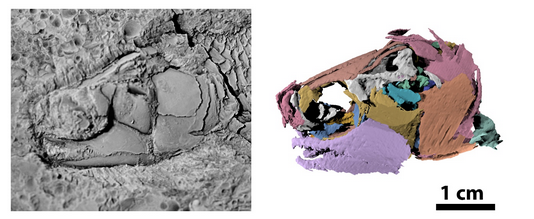Illuminating the early evolutionary history and cranial eco-morphology of neopterygian fishes
Alexander von Humboldt-funded project of Dr. Thodoris Argyriou argthod@gmail.com
Actinopterygians (ray-finned bony fishes) constitute the most species-rich clade of backboned animals. Over 99% of living ray-finned fish species are part of the so-called neopterygian clade, which is estimated to have arisen in the late Paleozoic (~350 million years ago). Yet, there are no definitive neopterygian fossils predating the early Mesozoic (~250 million years ago). This ~100-million-year gap in our understanding of the early evolutionary history of neopterygians largely stems from the poor informativeness of the fossil record of ray-finned fishes and a scarcity of detailed anatomical data from key late Paleozoic and early Mesozoic taxa. This gap, further prevents us from identifying the eco-morphological transformations that underlie the evolutionary success of Neopterygii. The late Paleozoic–early Mesozoic deposits of Germany and the Boreal Realm yielded a plethora of taxa, which despite being widely considered deeply-diverging neopterygians, remained largely overlooked for decades. This project plans to leverage modern anatomical imaging techniques (e.g., computed microtomography) for the study of exquisitely-preserved, undistorted, early neopterygian fossils from the Permian–Triassic of Germany (e.g., Kupferschiefer, Muschelkalk) and the Boreal Realm (e.g., Spitsbergen). The main aim is to provide the first detailed studies of the cranial endoskeleton of key early neopterygians, which will be fundamental for tracing the early evolutionary history of the clade, and the deep-time origins of modern lineages. Particular emphasis will be placed on the study of the feeding apparatus (jaws, hyoid and branchial arches), since anatomical modifications in such structures were historically thought to have underpinned the dominance of neopterygians in post-Paleozoic ecosystems. The overarching goal of this project is to provide a wealth of novel anatomical information for reconstructing the early neopterygian portion of the tree of life.
This project was hosted by Dr. Adriana López-Arbarello.

Image: Three-dimensionally preserved †‘Perleidiform’ fish skull, and its digital anatomical reconstruction, from the marine Early Triassic of Spitsbergen (Svalbard).

